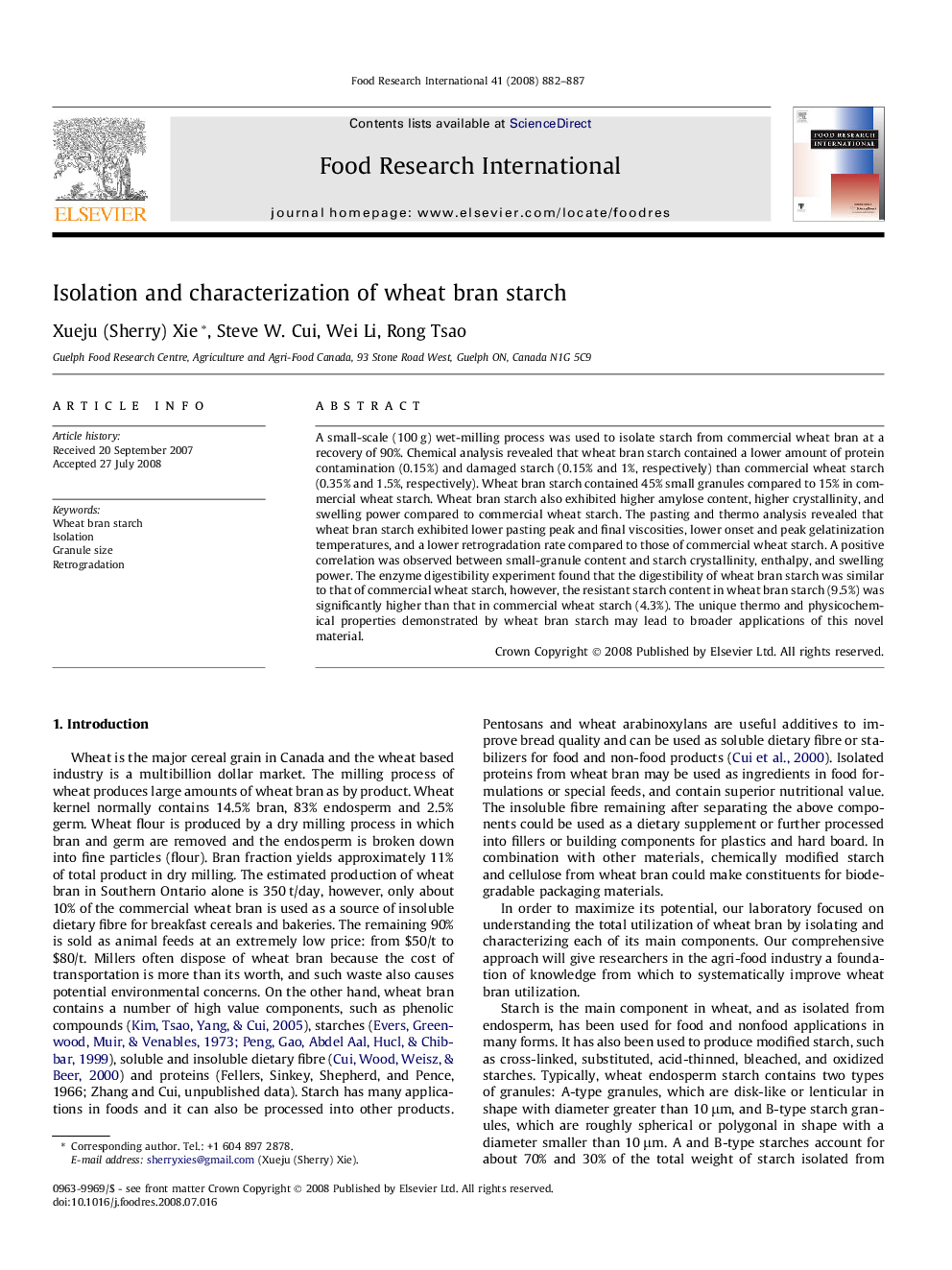| Article ID | Journal | Published Year | Pages | File Type |
|---|---|---|---|---|
| 4562505 | Food Research International | 2008 | 6 Pages |
A small-scale (100 g) wet-milling process was used to isolate starch from commercial wheat bran at a recovery of 90%. Chemical analysis revealed that wheat bran starch contained a lower amount of protein contamination (0.15%) and damaged starch (0.15% and 1%, respectively) than commercial wheat starch (0.35% and 1.5%, respectively). Wheat bran starch contained 45% small granules compared to 15% in commercial wheat starch. Wheat bran starch also exhibited higher amylose content, higher crystallinity, and swelling power compared to commercial wheat starch. The pasting and thermo analysis revealed that wheat bran starch exhibited lower pasting peak and final viscosities, lower onset and peak gelatinization temperatures, and a lower retrogradation rate compared to those of commercial wheat starch. A positive correlation was observed between small-granule content and starch crystallinity, enthalpy, and swelling power. The enzyme digestibility experiment found that the digestibility of wheat bran starch was similar to that of commercial wheat starch, however, the resistant starch content in wheat bran starch (9.5%) was significantly higher than that in commercial wheat starch (4.3%). The unique thermo and physicochemical properties demonstrated by wheat bran starch may lead to broader applications of this novel material.
